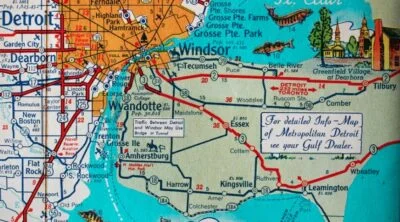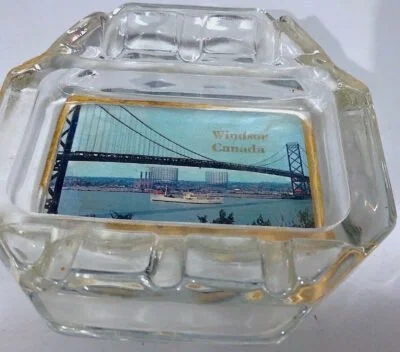1003 Windsor’s grit and magic
Fontainebleau
by Madeline Sonik
Vancouver: Anvil Press, 2020
$20.00 / 9781772141481
Reviewed by Ginny Ratsoy
*
 University of Victoria professor Madeline Sonik’s second collection of stories springs from the gritty suburban projects and amorphous rural settings in and around Windsor, Ontario in, roughly, the third quarter of the 20th Century. Linked short stories (think James Joyce’s Dubliners and most of Alice Munro’s oeuvre) occupy complex ground: each story must function as a unit unto itself, yet the whole should be unified and greater than the sum of its parts.
University of Victoria professor Madeline Sonik’s second collection of stories springs from the gritty suburban projects and amorphous rural settings in and around Windsor, Ontario in, roughly, the third quarter of the 20th Century. Linked short stories (think James Joyce’s Dubliners and most of Alice Munro’s oeuvre) occupy complex ground: each story must function as a unit unto itself, yet the whole should be unified and greater than the sum of its parts.

Like Joyce and Munro, Sonik recognizes that marginalized places can make for gripping fiction. She takes on the extra challenge of having characters recur in different tales – some peripheral to one story are central to another. This emphasis on community intricacies can create a micro-culture greater than the sum of its characters. It can also challenge the reader; it can entail circling to previous stories, and leave questions unanswered, particularly when individual endings are enigmatic, as they often are in Fontainebleau.
Largely written in third-person narration, these stories illuminate damaged characters who often cannot move past disadvantage because they refuse to accept their situations. They seldom find the refuge they seek, precisely because they search in the realm of illusion, magic, or myth. Sonik uses motifs from magic and fairy tales to heighten the gap between reality and illusion expertly.

“Slick” introduces the projects: cheaply and quickly built identical units designed for low- income, often single-parent families. Delinquent Jimmy Robinson is haunted by the ghost of his older brother Kevin, who was killed in a tobogganing accident. A latch-key kid with a propensity for arson, Jimmy is a veteran shop lifter, and not the only character in whose pocket a knife is ubiquitous. Routinely subjected to violence at the hands of his school principal, he encounters the man at a downtown store, where that violence may take an even uglier turn.
A few stories later, the “Flight” of Jimmy Robinson is both external and internal. Stealing a car to evade 13-year old pregnant Laurie Laframbois, Jimmy takes a rainy country ride in which his mind soon flees to Kevin’s world, returning to the present only when a crash leaves him in and out of consciousness. Several stories later, “Homecoming” identifies the dead body found in a Fontainebleau field as Jimmy, although, earlier, a body found in a car wreck had been identified as his. “Homecoming” examines the drunken reaction of his mother, Maureen, part dialogue with her dead mother, part recollection of Jimmy since birth, and part hallucination. In “No Kind of Man,” a few stories later, Laurie is in an agonized labour in the Fontainebleau field. Aware Jimmy is dead, she hallucinates interactions with him, eventually recognizing that the Brady Bunch life she had envisioned would not have happened with him, had he remained alive.


In the aptly titled “Illusions” the ghost of Kevin reappears, this time in the mind of Tony Deluca, the two having shared many wayward afternoons. Although Tony hasn’t thought of Kevin recently, memories flood him now– particularly details of Kevin’s preoccupation with Harry Houdini’s illusion of sawing a girl in half. Rich girl Julia Wilson was the object of Kevin’s (and, secretly, Tony’s) desires. Despite her coldness to them, shortly before Kevin’s death, the boys fashioned a “magic box” with her in mind as the magician’s assistant. Tony visits that box daily. When he confronted Julia, demanding she be the subject of the magic trick, and was met with disdain, Tony recalls, he initiated an assault on her; however, he cannot remember how that attack ended.

Sirenomelia, a rare congenital defect in which the legs are fused, has caused Celeste, in “The Mermaid,” to be confined to a walker and the scrappy Fontainebleau field. Reclusive and ridiculed, she is one of four daughters of an abusive, alcoholic single mother who is beyond finding medical assistance for Celeste. This story is a jarring mix of coarse realism and fairy tale: the family’s squalor and dysfunction are contrasted to, and heightened by, references to magical mirrors and princes. When Celeste becomes seriously ill, her mother does nothing, so Celeste’s sisters take action, and “The Mermaid” ends, as do many of the stories in this collection, cryptically.

In “Murder,” a murder of crows circling ominously overhead leads Lizzie, one of Celeste’s sisters searching for her, to a dead body. The crows are witnesses – truth knowers to the murderer: “As long as there were crows on earth, that human would know no peace” (p. 94). They are first to hear the sirens and see the officers’ shiny buttons and badges. More concerned about finding Celeste than the identity of the corpse, Lizzie, unlike the crows, is unaware that Celeste has been in the field recently. Officer Roger Foley silently wonders if this murder is connected to the upper half of a woman’s body found in the Detroit River. Foley, who, like Jimmy, is prone to out-of-body experiences, feels protectively connected to Lizzie, particularly as he witnesses her mother’s deepening rage. The story ends with positive identification of the body, the crows knowingly circling the scene.
Foley has another out-of-body experience in “Corrosion,” when he visits Elise Wilson after her daughter disappears. When the Detroit River victim is identified as Julia, Foley becomes the self-proclaimed protector of Elise, an artist whose medium is metal. The story ends with Elise apparently dumping a chain saw in the Detroit River, en route to dinner with Foley. In “Misdirection,” Foley, driving up main street past the hospital, recollects deaths he has witnessed – those of his brother, parents, best friend, pastor, and co-worker. Connecting his own ongoing grief to his personal involvement in the grieving of Lizzie and Elise, he feels guilt over not returning Lizzie’s calls because of his involvement with Elise. As he approaches Fontainebleau in a hailstorm, Foley again disconnects, and Lizzie’s sister Suzy temporarily misdirects him from his search for Lizzie and some excavation beside the family house. However, Foley is obsessed, and in the field finds a bruised Lizzie beside a dead body. The main street hospital is now brimming with the victims of a tornado. When Foley reaches out to Lizzie there, she attacks him. The knight in shining armour is apparently a psychotic killer: the “entity who has Roger but wasn’t Roger” (p. 162) confesses to drugging Lizzie and murdering Elise Wilson and others.

Eight years later, in “The Ice Queen,” Suzy, after connecting with a man who “knew the value of the Indigenous treasures”(p. 164) beneath the Fontainebleau home, owns the Essex cottage of which Fontainebleau residents dream. However, Suzy is still broken. The man she lured into an extramarital affair and married is cheating on her, and Suzy is unaware of Celeste’s whereabouts, estranged from her other sisters, and an unhappy and neglectful stepmother following the misanthropic, alcoholic path of her mother. The magical mirror she took from the family home has not only broken; it has injured her. Regret consumes Suzy, particularly for a murder she may have committed in her Fontainebleau past.
Although fairy tales do not come true in Fontainebleau, a few stories demonstrate the power of self-recognition, community, and love. “The Bone Game” is set in a downtown women’s shelter where Tanushri and her infant daughter have fled repeated abuse. With the help of teacher/counsellor Marjorie Loomis, Tanushri feels a sense of community at the shelter, and this story ends with the protagonist, characteristically, psychologically leaving her temporal surroundings, but, atypically, transcending the abuse she escaped. A combination of ancestral matriarchal connection and the sisterhood of the shelter results in an affirmative ending. Laurie Laframbois’s sister, Lynette, narrates “King Rat,” set in a pizza parlour — a backdrop for unveiling Lynette’s and her best friend Brian’s sad love lives. While new mother Lynette realizes Brian is deluded and must extricate himself from his relationship with Carl, she is similarly self deluded: Steve has left town and has been unreachable for months, yet she is unshakeable in her dream of a cozy Essex cottage for the three of them. When she serves her first customer, Lynette has her epiphany: the reality of her plight pours out of her.

In “Makeover,” Margaret Markovic, wife of a Fontainebleau teacher, takes a job as a chambermaid. As she cleans the opulent rooms, Margaret recollects her life roles — daughter, wife, and mother — and the emptiness they have engendered; this story is one of several highlighting the vacuity of the “ideal” life for women of the time. When she dons the wig and fancy dress of one of the guests, Margaret is unrecognizable – not only to her boss, but also to herself. The protagonists of these stories are at varying stages of transcending illusion and taking action.
“Proverbs,” the wrap-up story, adroitly walks a tight rope between illusion and reality. As a youth, Jack Goulet, briefly mentioned in previous stories, was brain injured in a farm accident. Jack has both hyperlexia (he can understand written words without being formally taught them) and foreign accent syndrome (he assumes foreign accents without being conscious of doing so). Jack is an inveterate reader and deep, creative thinker. He is also the murderer of his father (who had buried the bodies of prostitutes beneath their Essex barn) and, accidentally, his mother. While a teenaged misfit in Fontainebleau, Jack was championed by Marjorie Loomis, and that, and a subsequent connection with Celeste, would stay with him.

Meanwhile, he was imprisoned, escaped, and spent three years surreptitiously camping out in the Robarts Library at the University of Toronto, where an ambition to perform purely benevolent acts cemented in him. To accomplish goodness, Jack assumed the identity of a dead man and, for four years, worked for circuses, finding acceptance with a troupe that celebrated difference by employing the marginalized – including Celeste. In this troupe, Jack found a confessor and purged himself of his violent past. On his return to Fontainebleau, Jack and Marjorie overcome a 20-year age gulf and establish a relationship. Jack ponders whether he would have been obsessed with goodness had he not known evil; Marjorie is adamant that he has compensated for his sins, that good is inherent in bad.
“Proverbs” is a satisfying culmination to a hard-hitting collection that explores the complex interplay between good and evil, character and environment, and illusion and reality.

*

Like Madeline Sonik, Ginny Ratsoy spent her formative years in blue-collar neighbourhoods in Windsor, Ontario before making her way to British Columbia. Ratsoy’s latest academic publication is about a wonderful third-age learning organization, The Kamloops Adult Learners Society, (KALS) in No Straight Lines: Local Leadership and the Path from Government to Government in Small Cities, edited by Terry Kading (University of Calgary Press, 2018), reviewed by Michael Lait in The Ormsby Review. She is delighted to add that her recent retirement from academia has made it possible for her to join the board of directors of KALS, for whom she has instructed since 2007. Editor’s note: Ginny Ratsoy’s recent reviews include books by Mary MacDonald, Lauren Soloy, Nick Tooke, Alix Ohlin, Natelle Fitzgerald, Steven Price, and Sarah Louise Butler.
*
The Ormsby Review. More Books. More Reviews. More Often.
Publisher and Editor: Richard Mackie
The Ormsby Review is a journal service for in-depth coverage of B.C. books and authors. The Advisory Board consists of Jean Barman, Robin Fisher, Cole Harris, Wade Davis, Hugh Johnston, Patricia Roy, David Stouck, and Graeme Wynn. Scholarly Patron: SFU Graduate Liberal Studies. Honorary Patron: Yosef Wosk. Provincial Government Patron since September 2018: Creative BC
“Only connect.” – E.M. Forster